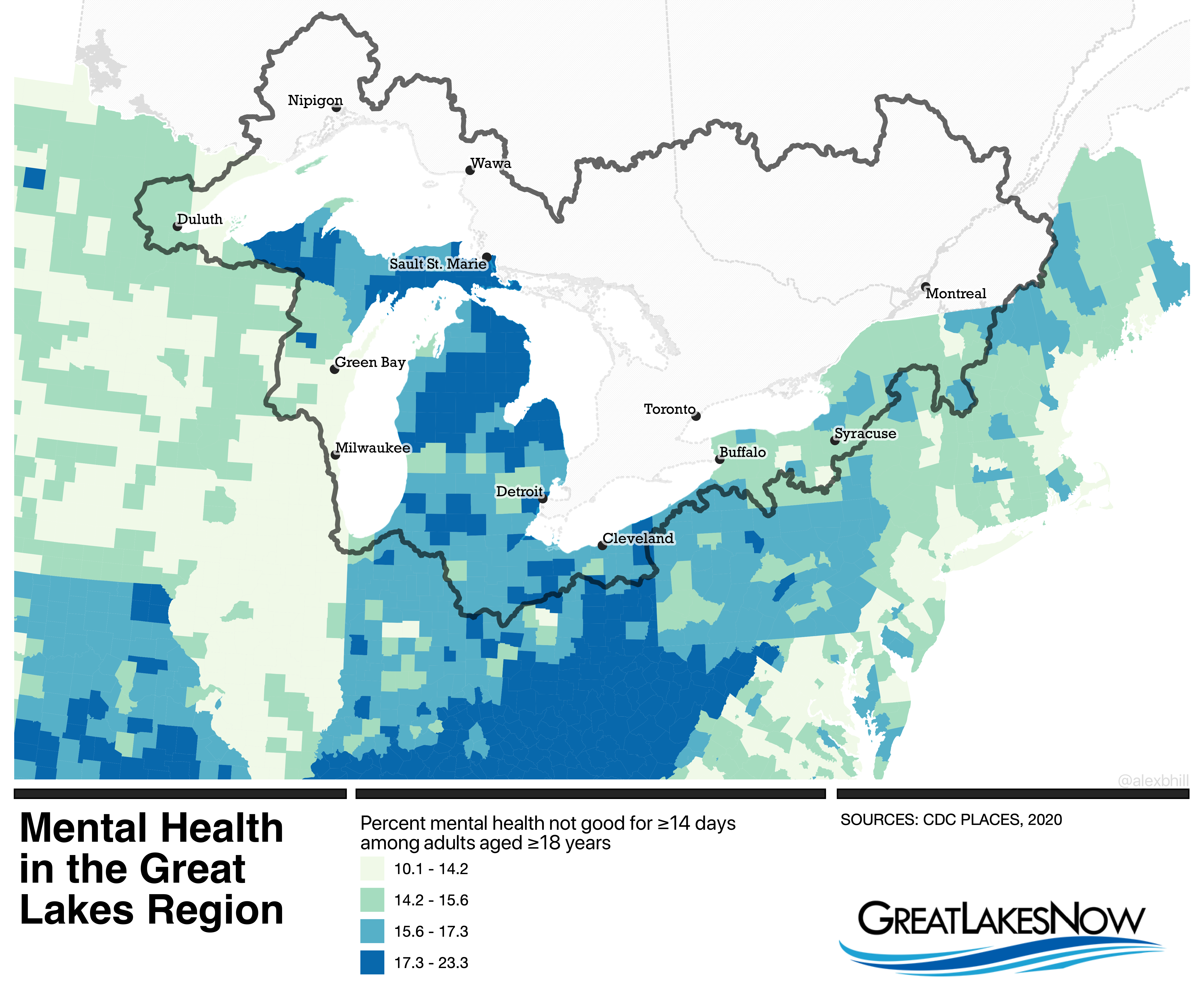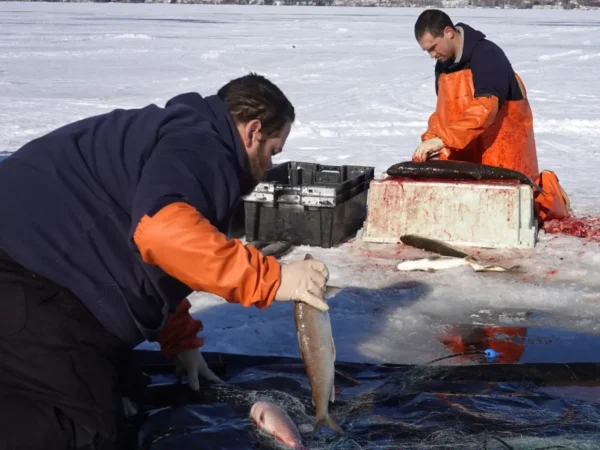

Love staring at a map and discovering something interesting? Then “Mapping the Great Lakes” is for you. It’s a monthly Great Lakes Now feature created by Alex B. Hill, a self-described “data nerd and anthropologist” who combines cartography, data, and analytics with storytelling and human experience. He’s the founder of DETROITography and authored “Detroit in 50 Maps,” a book published in 2021. Find all his Great Lakes Now work HERE.
The winter months around the Great Lakes region make for extended gray days with less sunshine. With less sunshine and more time spent indoors, mental health becomes a concern. This is usually discussed as seasonal depression or “seasonal affective disorder.” However, the Great Lakes also offer abundant opportunities to visit “blue spaces” that help lower stress and improve overall mental health. Studies have shown that marine and coastal areas make people happiest.
This health data comes from the Centers for Disease Control and Prevention (CDC) and is based off of their Behavioral Risk Factor Survey conducted across the country.

The data is utilized in the CDC PLACES project that is focused on bringing together better data for local health. The 2021 data is presented at the county level to see the broad patterns across the region. Mental health not being good for ≥14 days is one of three “heath status” measures available.
On the map, Michigan stands out as a place with more people in counties experiencing poor mental health days. Michigan ranks high for depressive events compared to the national average and faces a mental health care crisis. The Great Lakes present an opportunity to explore the relationships between wellbeing of residents, quality of life and the freshwater assets of the Great Lakes in both urban and non-urban areas. The region does has 27 Areas of Concern for environmental quality which likely complicates the benefits of blue spaces.
Catch more news at Great Lakes Now:
Mapping the Great Lakes: Snowfall in the snowbelt
Mapping the Great Lakes: Pumpkin production
Featured image: Map by Alex B. Hill




